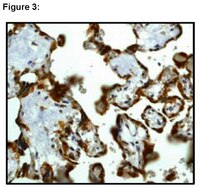Musashi2 sustains the mixed-lineage leukemia-driven stem cell regulatory program.
Park, SM; Gönen, M; Vu, L; Minuesa, G; Tivnan, P; Barlowe, TS; Taggart, J; Lu, Y; Deering, RP; Hacohen, N; Figueroa, ME; Paietta, E; Fernandez, HF; Tallman, MS; Melnick, A; Levine, R; Leslie, C; Lengner, CJ; Kharas, MG
J Clin Invest
125
1286-98
2015
Show Abstract
Leukemia stem cells (LSCs) are found in most aggressive myeloid diseases and contribute to therapeutic resistance. Leukemia cells exhibit a dysregulated developmental program as the result of genetic and epigenetic alterations. Overexpression of the RNA-binding protein Musashi2 (MSI2) has been previously shown to predict poor survival in leukemia. Here, we demonstrated that conditional deletion of Msi2 in the hematopoietic compartment results in delayed leukemogenesis, reduced disease burden, and a loss of LSC function in a murine leukemia model. Gene expression profiling of these Msi2-deficient animals revealed a loss of the hematopoietic/leukemic stem cell self-renewal program and an increase in the differentiation program. In acute myeloid leukemia patients, the presence of a gene signature that was similar to that observed in Msi2-deficent murine LSCs correlated with improved survival. We determined that MSI2 directly maintains the mixed-lineage leukemia (MLL) self-renewal program by interacting with and retaining efficient translation of Hoxa9, Myc, and Ikzf2 mRNAs. Moreover, depletion of MLL target Ikzf2 in LSCs reduced colony formation, decreased proliferation, and increased apoptosis. Our data provide evidence that MSI2 controls efficient translation of the oncogenic LSC self-renewal program and suggest MSI2 as a potential therapeutic target for myeloid leukemia. | 25664853
 |
Optimisation of ICP-MS collision/reaction cell conditions for the determination of elements likely to be interfered (V, Cr, Fe, Co, Ni, As and Se) in foodstuffs.
Ali Kadar,Laurent Noël,Rachida Chekri,Christelle Vastel,Sandrine Millour,Thierry Guérin
Talanta
85
2010
Show Abstract
A strategy for the accurate determination in foodstuffs of seven elements liable to be interfered with (V, Cr, Fe, Co, Ni, As and Se), was successfully applied. Firstly, to reduce spectroscopic interferences, four influential factors (hexapole and quadrupole bias, helium and hydrogen flows) of the collision/reaction cell device were optimised through the experimental design methodology. Secondly, non-spectroscopic interferences, which may severely disturb the analysis of matrices containing large amounts of non-target elements, were significantly reduced by a limited decrease in the flow rate of the optimum initial nebuliser rather than with a specific time-consuming dilution. Finally, the optimised multi-element method was subjected to a full validation that demonstrated its acceptable analytical performance. | 21962690
 |













 Antibody[222208-ALL].jpg)




 Antibody[201009-ALL].jpg)

